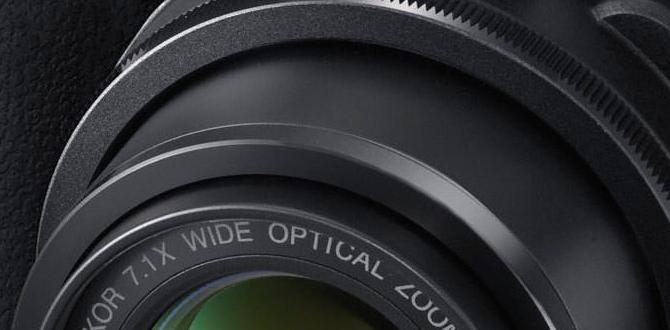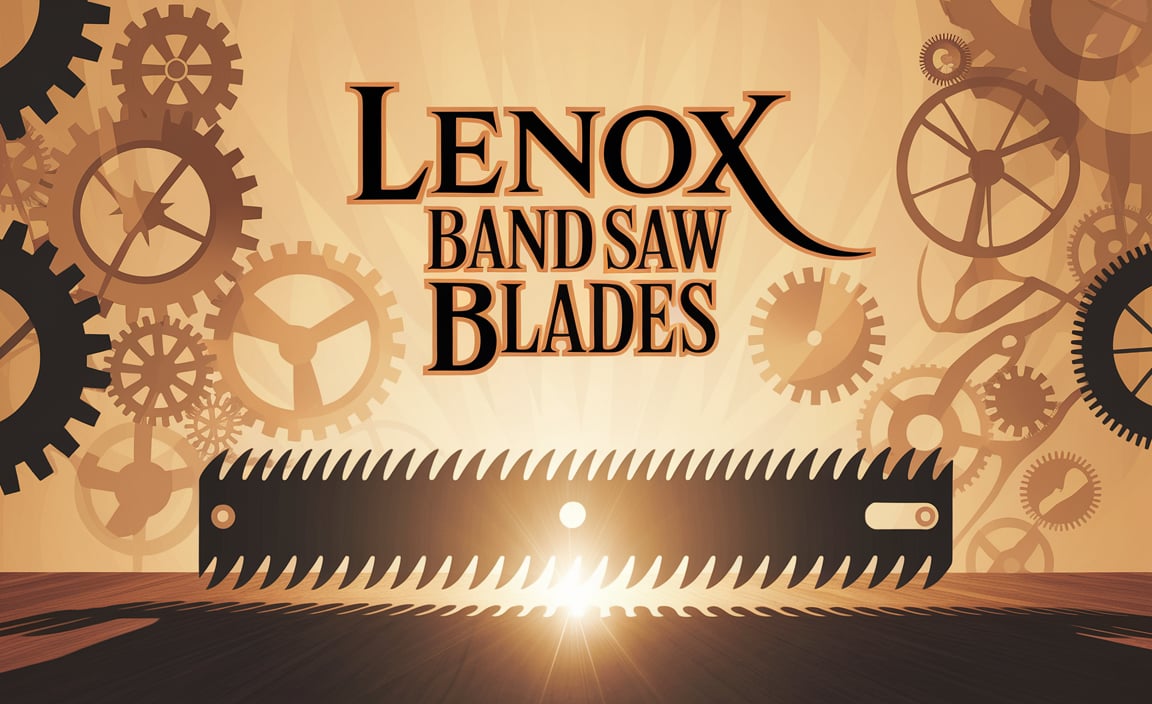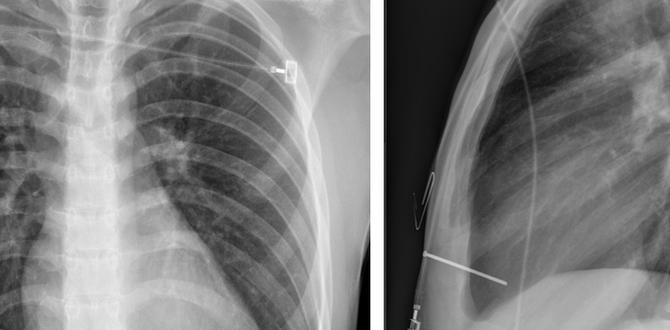Choosing between cordless and pneumatic nailers for your home workshop? Cordless offers ultimate freedom and portability without hoses or compressors, ideal for DIYers and mobile projects. Pneumatic nailers provide unmatched power and consistent firing, perfect for demanding professional tasks and high-volume work. Your project needs and workspace will guide this essential choice.
Hey there, fellow makers and DIY enthusiasts! Jack Shaffer here, your guide from Nailerguy. Ever stare at a project and wonder which nailer is the right tool for the job? If you’re building that dream bookshelf, framing a wall, or just hanging some trim, the decision between a noisy, air-powered nail gun and a sleek, battery-powered one can feel like a big one. Don’t sweat it! We’ve all been there. With a little know-how, you’ll be confidently picking the perfect nailer in no time. Let’s break down the cordless vs. pneumatic nailer puzzle, making it simple and clear so you can get back to building.
Table of Contents
Cordless vs. Pneumatic Nailers: Understanding the Basics
At its heart, a nailer is a tool that drives nails into wood or other materials. The main difference between cordless and pneumatic nailers lies in how they get their power, which affects their performance, portability, and even the overall DIY experience.
What Powers a Nailer?
The power source is what really sets these two types apart. Think of it like this:
- Pneumatic Nailers: These rely on compressed air. You’ll need an air compressor machine and an air hose to connect the compressor to the nailer. The compressor pumps air into a tank, and when you pull the trigger, that stored air pressure is released powerfully through the hose to drive the nail.
- Cordless Nailers: As the name suggests, these are powered by batteries. They have a built-in motor and fan system that uses the battery’s energy to generate the force needed to fire a nail. Some cordless models also have a small gas canister for an extra boost, which we’ll touch on later.
The Case for Cordless Nailers: Freedom and Convenience
Cordless nailers have become incredibly popular, especially for home workshops and DIY projects, and for good reason. Their biggest advantage is sheer freedom. Imagine working on a deck, in a remote corner of your yard, or even up on a ladder without being tethered by a hose. That’s the cordless life!
Pros of Cordless Nailers
- Ultimate Portability: No air compressor, no hoses, no problem! You can take them anywhere your project takes you. This is a huge plus for on-site work or when you’re working in tight spaces.
- Quick Setup: Just grab the charged battery, load some nails, and you’re ready to go. No wrestling with hoses or waiting for a compressor to fill up.
- Clean Workspace: Fewer components mean less clutter. No air hoses snaking across your floor or tripping you up.
- Ideal for Many Projects: Great for trim work, cabinetry, furniture building, fencing, and general repairs around the house.
- User-Friendly: Generally very easy to operate, making them a fantastic choice for beginners.
Cons of Cordless Nailers
- Battery Dependency: You need charged batteries. If you run out of juice mid-project, you’ll have to wait for a recharge or swap in a fresh pack.
- Weight: The battery pack and internal motor can make cordless nailers heavier than some pneumatic models.
- Firing Speed: While improving rapidly, they might not fire as rapidly or consistently as high-end pneumatic nailers, which can be a factor for very high-volume tasks.
- Cost: Initial cost can be higher, especially if you need to buy extra batteries or a charger.
- Power Limitations: Some heavier-duty nailing tasks, like framing large lumber, might require more power than some cordless models can consistently deliver.
Types of Cordless Nailers
Cordless nailers aren’t all the same. They often use different technologies to generate their driving force:
- Battery-Powered (Direct Drive): These use the electric motor and a flywheel system to directly drive the nail. They are generally lighter and simpler.
- Battery + Fuel Cell (Impulse Powered): These combine a battery with a small, disposable propane-like fuel cell. The battery ignites the fuel mixture, creating a small explosion that drives a piston. This offers more power and can be great for framing, but requires purchasing fuel cells. Think of it like a miniature, controlled bang for each nail. Companies like Paslode are well-known for this technology.
The Enduring Power of Pneumatic Nailers: Reliability and Force
Pneumatic nailers are often considered the workhorses of the nail gun world. They’ve been around for a long time and are trusted by professionals for their sheer power, speed, and consistent performance. If you think of a busy construction site, you’re likely picturing pneumatic nailers.
Pros of Pneumatic Nailers
- Superior Power: They deliver consistent, high-impact force. This makes them excellent for driving larger nails into tough materials, like framing framing lumber or sheathing roofs.
- Fast Firing Rate: Professionals can typically fire nails much faster with pneumatic tools, which is essential for high-volume work.
- Lighter Tool Weight: The nailer itself is often lighter because the compressor and motor are separate. The hose adds some bulk, but the tool in your hand can feel more manageable for extended use.
- Lower Tool Cost: The nailer itself is often less expensive than a comparable cordless model, though you need to factor in the cost of the compressor.
- Reliability: They are known for their durability and long service life when properly maintained.
Cons of Pneumatic Nailers
- Requires an Air Compressor: This is the biggest hurdle. You need to invest in a compressor, which takes up space and can be noisy.
- Air Hoses: You’re tethered by an air hose, limiting your range of motion and potentially creating a tripping hazard.
- Setup Time: It takes time to connect the hose, check air pressure, and wait for the compressor to build up pressure.
- Noise: Both the compressor and the nailer itself can be quite loud, often requiring hearing protection. For a home workshop that might be attached to living spaces, this can be a significant consideration.
- Maintenance: Air compressors and pneumatic tools require regular maintenance, like draining water from the tank and lubricating moving parts.
For a deeper dive into the mechanics and care of air compressors, check out resources like this guide from Family Handyman, a trusted source for DIYers.
Cordless vs. Pneumatic Nailers: Key Differences at a Glance
Let’s put the key features side-by-side to help you visualize the differences.
| Feature | Cordless Nailer | Pneumatic Nailer |
|---|---|---|
| Power Source | Rechargeable Battery (sometimes with fuel cell) | Air Compressor & Air Hose |
| Portability | Very High (no hoses) | Moderate (limited by hose length) |
| Setup Time | Fast (charge battery, load nails) | Slower (connect hose, build pressure) |
| Power Output | Good to Very Good (improving rapidly) | Excellent & Consistent |
| Firing Speed | Moderate to Fast | Very Fast |
| Tool Weight | Moderate to Heavy (due to battery/motor) | Lighter (tool itself), but requires compressor |
| Noise Level | Moderate | High (tool + compressor) |
| Cost (Initial) | Higher (tool + battery/charger) | Lower (tool), but higher with compressor purchase |
| Maintenance | Minimal (battery care) | Moderate (compressor draining, lubrication) |
| Best For | Trim, cabinetry, DIY projects, mobile work, convenience | Framing, roofing, subflooring, high-volume professional use |
Choosing the Right Nailer for Your Workshop
So, which one is right for you? The answer, as is often the case in the workshop, depends on your specific needs and how you plan to use the tool.
Consider Your Projects
What kind of work do you do most often, or what do you plan to tackle?
- Trim & Molding: If you’re installing baseboards, crown molding, window casings, or decorative trim, a cordless finish nailer or brad nailer is usually perfect. They are lightweight, easy to maneuver, and don’t mar the delicate surfaces.
- Cabinetry & Furniture: For building cabinets, drawers, or assembling fine furniture, a cordless brad nailer or pinner is invaluable for holding pieces together while glue dries, or for adding decorative elements.
- Framing & Construction: If you’re building decks, sheds, fences, or framing rough walls, a pneumatic framing nailer or a powerful cordless framing nailer (often fuel-assisted) will be your best bet for driving large nails quickly through thick lumber.
- Flooring: Installing hardwood or laminate flooring often requires specialized flooring nailers, which can be either pneumatic or manual (though some battery-powered options are emerging).
- General Repairs & DIY: For general household repairs, hanging pictures, or smaller DIY ventures, a smaller cordless brad nailer or finish nailer is incredibly handy.
Evaluate Your Workspace
Think about where you’ll be using the nailer most often.
- Limited Space or Mobility Needed: If your workshop is small, you move between job sites often, or need to work in tight corners, cordless is a clear winner.
- Dedicated Workshop Area: If you have a dedicated space where a compressor and hoses won’t be in the way, and noise isn’t a major issue, pneumatic might be a good fit.
- Power Availability: Do you have easy access to power for both a compressor and potentially to charge batteries?
Budget Considerations
The initial cost can be a deciding factor, but it’s worth looking at the long-term value.
- Cordless: The upfront cost can be higher. You’re paying for the integrated technology of the battery and motor. However, you save on the cost of an air compressor and hoses. If you already own batteries for other tools from the same brand, expanding your cordless tool collection can become more economical.
- Pneumatic: The nailer itself is often cheaper. However, you must buy an air compressor, which can range from a few hundred to over a thousand dollars depending on its size and capabilities. Air hoses and fittings add to the cost. If you plan on using other air-powered tools (like sanders, impact wrenches, or paint sprayers), a compressor can offer a great return on investment.
When considering new tools, think about the total cost of ownership and how it fits your financial plan. Resources from organizations like the Occupational Safety and Health Administration (OSHA) offer insights into tool safety standards, which are critical regardless of power source.
Popular Nailer Types for Different Jobs
Beyond the power source, there are different types of nailers designed for specific tasks. Understanding these will help you narrow down your cordless vs. pneumatic choice for each job.
- Framing Nailers: These are the heavy hitters, designed to drive 2″ to 3.5″ nails into structural lumber for building frames, subfloors, and roofs. They pack a serious punch.
- Finish Nailers: Perfect for installing trim, molding, and cabinetry. They drive slimmer nails (typically 15 or 16 gauge) with smaller heads, leaving a minimal, easily fillable hole.
- Brad Nailers: Even slimmer than finish nailers (18 gauge), brad nailers are great for delicate trim, smaller craft projects, and holding pieces of wood together while glue dries.
- Pin Nailers (or Micro Nailers): These use tiny headless pins (23 gauge) for very fine detail work, tacking small trim pieces, or attaching delicate items where even a brad nailer’s hole would be too noticeable.
- Siding Nailers: Designed specifically for installing siding, these drive larger nails with wide heads to securely fasten siding materials.
- Roofing Nailers: Built for speed and durability, these are used to attach shingles and underlayment. They usually fire efficiently in bulk.
For almost every type of nailer (framing, finish, brad, pin), you can now find excellent cordless versions that compete strongly with their pneumatic counterparts, offering flexibility without sacrificing too much performance for the average DIYer.
Safety First: Always Protect Yourself!
No matter if you choose cordless or pneumatic, safety is paramount. Nail guns are powerful tools, and accidents can happen quickly. Always follow these essential safety guidelines:
- Read the Manual: Every tool is different. Understand your specific nailer’s features and safety recommendations.
- Wear Safety Glasses: Always wear ANSI-approved safety glasses or goggles. A ricocheting nail or nailer malfunction can cause serious eye injuries.
- Secure Your Workpiece: Make sure the material you’re nailing into is stable and won’t move when you fire the nail.
- Never Point at Yourself or Others: Treat the nailer with respect. Never point it at anyone, even if you think it’s not loaded.
- Keep Fingers Off the Trigger: Don’t put your finger on the trigger unless you intend to fire a nail.
- Use Contact Trip vs. Sequential Trip Wisely:
- Contact Trip (Bump-Fire): This is the faster mode where the nail fires when the safety contact on the nose touches the workpiece and the trigger is depressed. It’s efficient but can lead to accidental firing.
- Sequential Trip (False Trip Prevention): You must press the safety contact against the workpiece first, then pull the trigger, for a single nail to fire. This is the safer mode, especially for precise placement. Most modern nailers have modes that can be switched, or they come with a safety mechanism to prevent accidental firing (like a tip that needs to be depressed). Always use the safest mode possible for your task.
- Turn Off and Disconnect: When not in use, carrying the tool, or performing maintenance, turn off the power source. For pneumatic nailers, disconnect the air hose. For cordless, remove the battery.
- Proper Storage: Store your nailer and accessories safely and out of reach of children.
Understanding these safety protocols is crucial. For more detailed safety information, the National Institute for Occupational Safety and Health (NIOSH) provides excellent resources on nail gun safety.
Frequently Asked Questions about Cordless vs. Pneumatic Nailers
Here are some common questions beginners have when weighing their options:
Q1: Can a cordless nailer do the same jobs as a pneumatic one?
A: For many jobs, yes! Modern cordless nailers are very powerful and effective for trim, finishing, and even some lighter framing. However, for heavy-duty, high-volume professional tasks like rapid framing on a construction site, a pneumatic nailer still generally holds the edge in consistent power and speed.
Q2: Which is better for a beginner: cordless or pneumatic?
A: For most beginners working on home projects, a cordless nailer is often the easier and more convenient choice. The lack of hoses and compressors means simpler setup and operation, allowing you to focus on learning the technique rather than managing extra equipment.
Q3: Do cordless nailers need maintenance?
A: Cordless nailers require much less maintenance than pneumatic tools. The main things are keeping the battery charged and clean, and occasionally cleaning the nail feeding mechanism and air vents. There are no air lines to drain or seals to lubricate.





